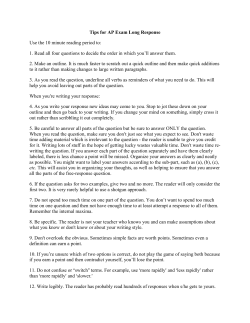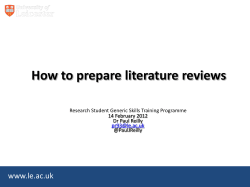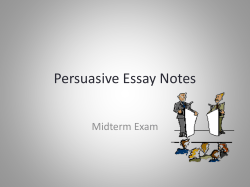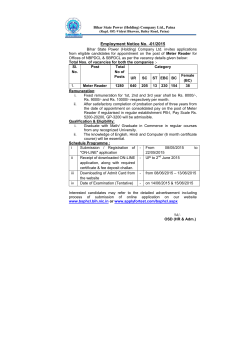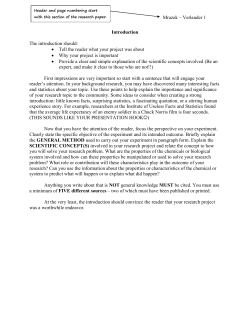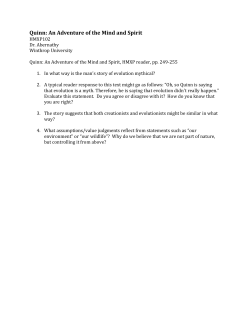
A Guide (with Rules of Notice) for Reading Fiction
Outline of “Rules of Notice” for Reading Fiction Adapted from Before Reading, by Peter J. Rabinowitz “Rules of notice” tell the reader where to concentrate attention. Certain features in a text are stressed, and it is on those features that the reader can begin to build an interpretation. RULES OF PRIVILEGED POSITION: Pay close attention to certain details that are placed in privileged positions by the author. For example: Titles and subtitles are privileged. They tell us where to focus our attention, and provide a core around which to organize our interpretation. First and last sentences/beginnings and endings. A valid interpretation of a text will be able to incorporate the message/meaning of the first and last sentences (of chapters or of work as a whole). Authors often place important information in these positions. A first sentence can help structure a reading experience, and a last sentence can help you re-evaluate your interpretation after reading. Repetition. Repeated actions/ideas are meant to attract the attention of the reader and suggest importance. Figurative language like metaphors, similes, and personification. Typography. Words or phrases that are italicized or otherwise set apart from the rest of the text. Spacing and line breaks. Pay attention to how the author chooses to break up the text – it may be a signal for a change in the time structure (i.e. flashback), a change in narration, etc. Epigraphs. An epigraph is a quote that comes before the beginning of a text and can serve to raise the expectations of the reader about events to come. Threats, warnings, promises. These should be noticeable because they may predict or shape the upcoming events in the text. Details given at a climactic moment (revelations) receive special stress. For example, when an event or detail answers a question, it is emphasized. Apparent irrelevance/inappropriate behavior. If a detail or comment by a character seems to have no relevance to the story, then it is probably worth noting. In the same way, if a character behaves in an unexpected on inappropriate way, it should be paid attention to. Other Rules of Notice: Metaphorical rules of physical appearance. The reader is to judge characters by their exterior until the text instructs us to do otherwise – physical appearance stands metaphorically for inner quality. Also, we generally treat the way characters sound as we treat the way they look. (For example, if a character is described to have a “cold eyes,” the reader can assume that this character has a cold personality. Similarly, if a character has a “musical voice,” we can make certain assumptions about that character’s pleasant personality.) Physical or verbal characteristics stand in for moral qualities. We are expected to assume that one moral failing accompanies another. (For example, if we are told that a character has had a moral failure in the past, we can likely expect another to occur.) Allusions to other characters as a basis for judgment. Readers are expected to transfer judgment when characters in the text are compared to other characters in previous, familiar texts. (For example, if an author compares his/her character to Friar Lawrence, the reader can transfer the same judgments/traits from Friar to the new character.) Events in fiction have a predictive value that they do not have in real life. Because we realize that the author has control over the shape of the text, future events in the narrative are predictable. Rule of looming cataclysm. Used by novels set in specific historical periods (like right before a revolution). This rule can apply only to works written after the event, of course. We go into A Tale of Two Cities already knowing that the French Revolution is coming. Potential obstacles. If the course of action seems smooth, then anything that looks like a potential obstacle has the likelihood of turning into one; also, if potential obstacles are absent, we should expect one to emerge eventually.
© Copyright 2025
